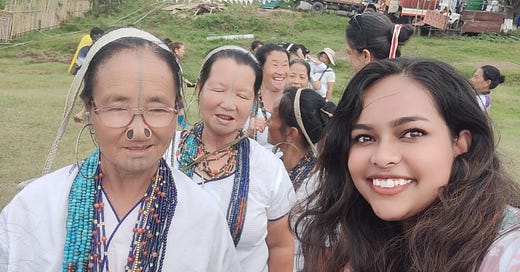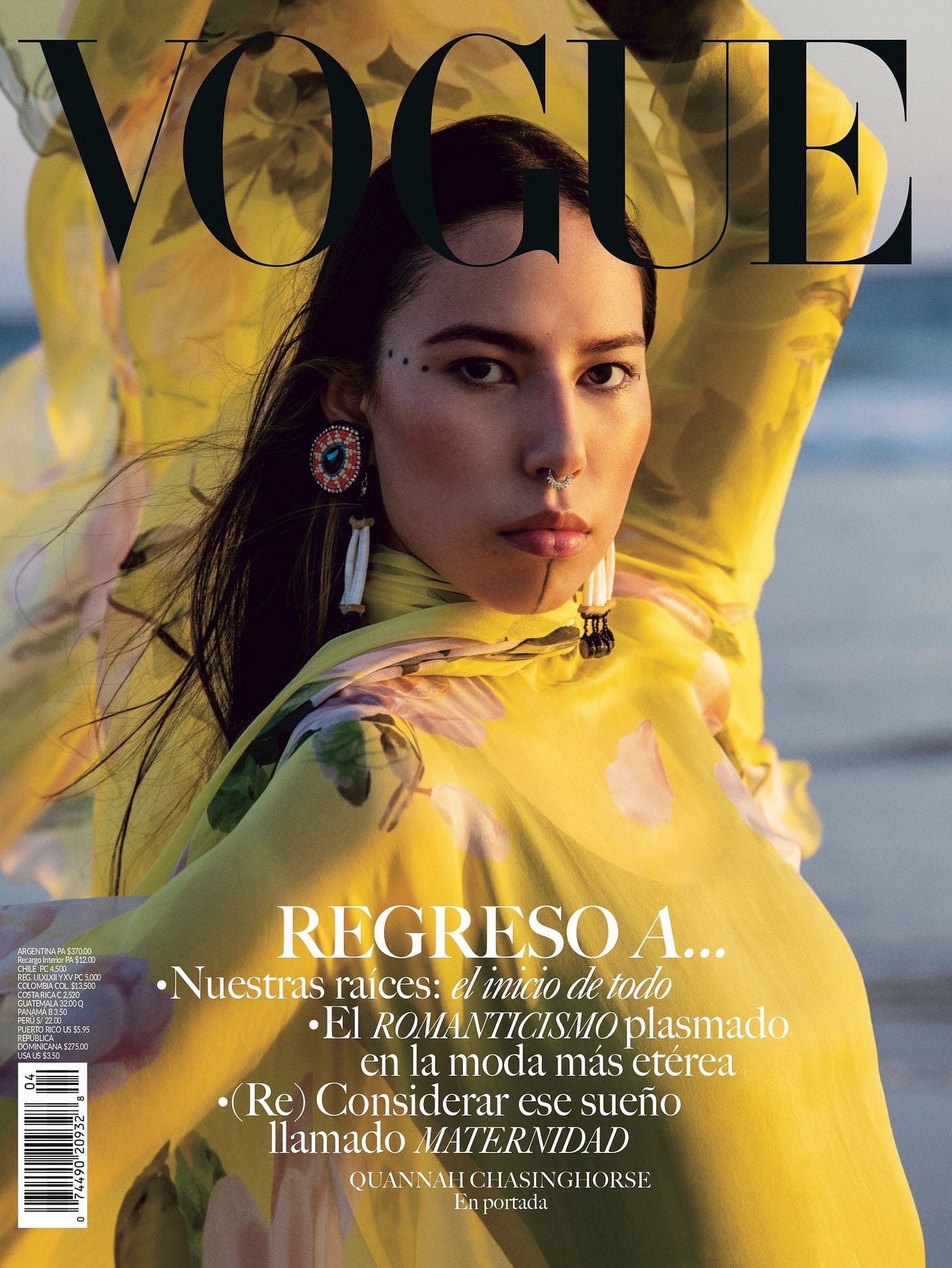Tracing inked faces across cultures
From Apatani to Yazidis, women with facial tattoos are across the globe yet are diminishing everywhere
I read about Apatani women when I was researching for my trip to Ziro. What I found the most interesting were their facial tattoos and large nostril plugs ! There are many stories about why the Apatani women started getting facial tattoos - to avoid being kidnapped by the neighboring tribes or to protect themselves from the spirits.
In the rush of the festival, even though I did visit their village and clicked pictures with some women, I could not interact properly. I wanted to sip tea and know their stories, maybe ask a young girl why she does not have a tattoo. Maybe show them my tattoos as they clearly show theirs.
Recently I was reading a book “There are rivers in the sky” by Elif Shafak, and a paragraph caught my eye
Grandma passes her palm across her eyebrows, touching the tattoo on her forehead. The ink is made from soot, ash and mother’s milk. Drawing patterns on the face – deq – used to be common among the women of this region, but the custom is fading. Some people have stars or moons or suns on their chins; others diamonds to attract strength and ward off the evil eye. Yet others have tiny honeycombs so that their words will always be sweet. Grandma’s tattoo, which she inherited from her own grandmother, is three wedge-shaped vertical marks:
Narin, too, wants the same design someday.It is not fair that they won’t let her, considering that Grandma got hers when she was a little girl. But times have changed, and they advise her not to rush. A tattoo is like a promise, they say, an oath inscribed into your skin, and you need to be sure you can keep it before you commit to it.
I was intrigued. My mind obviously went back to the Apatani tribe and how even Yazidi women in Mesopotamia, one of the oldest civilizations of the world shared a similar ritual. And so, once again I began my research.
There is a tradition of face tattoos in Chin tribe in Myanmar, which was banned in 1960 by the government in the name of modernization. The older women still equate the tattoos to beauty but like their age, the tattoos are also fading away slowly. Younger women are choosing not to have any tattoos. Face tattoos are called Niksat in northern Ethiopia and Kakiniit in Inuit. There’s even a documentary on the same called Tunniit.
One of the main reasons for the tradition is aesthetic and religion . However it also meant protection from evil eye and spirits, healing from different aches and pains. Tattoos were also called poor man’s jewelery.
“It was the responsibility of the women to have these symbols to protect their entire families from these otherworldly spirits, It really made it quite clear the power of the woman.”
-Al-Arashi, a photographer who researched and documented over 100 women in Morocco, Algeria and Tunisia.
While I read more about it online, I was surprised to find a tiny wave of resurgence of facial tattoos , to reclaim the identity. In December 2020, Inuit TikTok user Shina Nova got her first facial tattoos representing womanhood and healing. Tattoos are not just markings but storytelling and these women are bringing forward the story of their ancestors.
The tradition is surprisingly present all over the world, different patterns and different customs, bound by a common itch to get marked on the face: adorning the body with art for a spectrum of reasons. I was surprised by how this itch was birthed in different time periods and regions entirely disconnected from each other.
Is it that different from the tattoos I have on my body, letters in different languages reminding myself and the world of what I want to say?
Like a lot of people, I have agonized over my first tattoo for years, fiddling with images and words and the place I want to get it on. The other two were much much easier, and each is pretty close to my story, my beliefs. Interestingly all are words and all on my arms. Facial tattoos, however feel much more scarier in context of permanence.
But facial tattoos for women all over the globe are also linked by a common factor: the declining trend among younger generation. It is an art which is being misted by the waves of modernity.
Are all traditions worth restoring? Face tattoos are painful, they are also marking a person as different from someone without the tattoo, isolating in a sense. So the argument is much more nuanced.
But what you and I can do is to understand , to document and to hold with respect an interesting practice which is tattooed across the world map :)








I loved reading your article. It is so interesting to open the discussion about the indigenous way of life and traditions that comes with it. Thank you for sharing it !